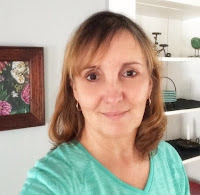~~~~~~~~~~~~~~~~~~~~~~~~~~~~~~~~~
I read and reread The Small Big: Small changes that spark big influence by Steve J. Martin, Noah J. Goldstein, and Robert B. Cialdini. It’s not that it tells me anything new about marketing, writing copy, or putting together great pitches. It’s that it inspires me anew, and reminds me of what a tough job those tasks are and how so many other disciplines are involved, two of my favorites. Words matter. And Psychology. And, yes, capital letters because they are so important.
For instance, here’s a quote that beautifully distills the six principles of marketing for any field you are in:
- “. . . reciprocity (people feel obligated to return favors performed for them),
- authority people look to experts to show them the way)
- scarcity (the less available the resource, the more people want it)
- liking (the more that people like others, the more they want to say yes to them)
- consistency (people want to act consistently with their commitments and values)
- and social proof (people look to what other do in order to guide their own behavior).”
This book includes studies that show people in any industry (including my favorites, those associated with writing of any kind) how to frame what they have to say right down to what to put first, what to stress, and words to choose that influence people in different ways.
This is a book you’ll want to read—and reread—as I do.
Reread? Well, it is so jam packed you’ll need to go back to it time again to get it all and keep utilizing what it teaches you in everything from your blogging, to your query letters where a great pitch is essential, to writing your synopses. Here’s the link again—in bright red so you you’ll have not trouble finding it and using it:
http://bit.ly/InfluenceTactics
----
Contributed by Carolyn Howard-Johnson, author of the multi award-winning HowToDoItFrugally Series of books--one for writers and one for retailers. She is now working on the third in the seires (after The Frugal Book Promoter and The Frugal Editor), Getting Great Reviews Frugally and Ethically. All her books, including her fiction and poetry, are available as paperbacks and e-books on Amazon.
----
Contributed by Carolyn Howard-Johnson, author of the multi award-winning HowToDoItFrugally Series of books--one for writers and one for retailers. She is now working on the third in the seires (after The Frugal Book Promoter and The Frugal Editor), Getting Great Reviews Frugally and Ethically. All her books, including her fiction and poetry, are available as paperbacks and e-books on Amazon.














